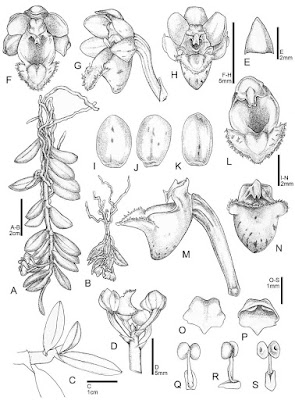 |
| Phylogeny of Phylloscopidae
in Alström, Rheindt, Zhang, Zhao, Wang, et al., 2018.
|
Highlights
• Complete species-level phylogeny for Seicercus and Phylloscopus.
• Time calibrated phylogeny.
• Taxonomic revision of Phylloscopidae.
Abstract
The leaf warbler radiation (Aves: Phylloscopidae) has undergone a c. 50% increase in the number of recognised species over the last three decades, mainly as a result of analyses of vocalisations and DNA. Using a multilocus dataset for all of the species in this family, and multispecies coalescent-based as well as concatenation methods, we provide the first complete species-level phylogeny for this important group, as well as an estimate of the timing of diversification. The most recent common ancestor for the family was dated at 11.7 million years ago (mya) (95% highest posterior density 9.8–13.7 mya), and divergence times between sister species ranged from 0.5 mya (0.3–0.8 mya) to 6.1 mya (4.8–7.5 mya). Based on our results, we support synonymising Seicercus with Phylloscopus, which results in a monogeneric Phylloscopidae. We discuss the pros and cons of this treatment, and we argue against proliferation of taxonomic names, and conclude that a large monogeneric Phylloscopidae leads to the fewest taxonomic changes compared to traditional classifications.
We briefly discuss morphological evolution in the light of the phylogeny. The time calibrated phylogeny is a major improvement compared to previous studies based on a smaller number of species and loci and can provide a basis for future studies of other aspects of phylloscopid evolution.
Keywords: Species tree, Concatenation, Taxonomic revision
Conclusions:
The generally well resolved and well supported time calibrated phylogeny is a major step forward compared to earlier studies based on a smaller number of species and loci. This can provide a basis for future studies of other aspects of the evolution of this ecologically important group of birds.
Per Alström, Frank E. Rheindt, Ruiying Zhang, Min Zhao, Jing Wang, Xiaojia Zhu Chyi Yin Gwee, Yan Hao, Jan Ohlson, Chenxi Jia, Dewi M. Prawiradilaga, Per G. P. Ericson, Fumin Lei and Urban Olsson. 2018. Complete Species-level Phylogeny of the Leaf Warbler (Aves: Phylloscopidae) Radiation. Molecular Phylogenetics and Evolution. 126; 141-152. DOI: 10.1016/j.ympev.2018.03.031















































